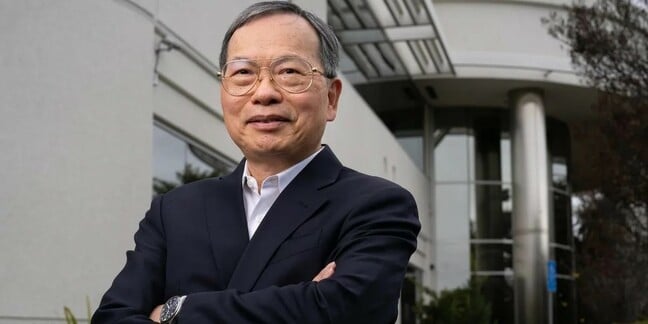Supermicro CEO Predicts 20 Percent Of Datacenters Will Adopt Liquid Cooling
Supermicro's founder, president and CEO Charles Liang has suggested a fifth of datacenters – maybe more – will need to adopt liquid cooling in coming years.
Liang shared that opinion in an open letter posted on Thursday, US time, that celebrates Supermicro's 30th birthday on November 1, 2023.
"Thirty years ago, Supermicro began designing the best motherboards and the most energy efficient power supplies for many companies producing servers and personal computers," Liang opened, before recounting how growth led the fledgling manufacturer to develop "complete systems optimized for different workloads."
That offering grew into its current hallmark product: rack-level systems pre-integrated with popular applications that just require electricity to commence operations. Such systems are "a cornerstone of our strategy," Liang added.
The CEO's post reveals that Supermicro's directions were influenced by 2004 disaster movie The Day After Tomorrow – the plot of which is described by the Internet Movie Database as "Jack Hall, paleoclimatologist, must make a daring trek from Washington, DC to New York City to reach his son, trapped in the crosshairs of a sudden international storm which plunges the planet into a new Ice Age." If you haven't seen it, it's a romp – but not exactly a documentary.
"Based on the movie's story about how terrible global warming is caused by humans' high energy consumption from fossil fuels, I decided that Supermicro should design high efficiency power supplies and then entire systems and datacenters," Liang wrote.
- As liquid cooling takes off in the datacenter, fortune favors the brave
- What supply chain crisis? Supermicro lifts rack-scale system production
- When it comes to liquid and immersion cooling, Nvidia asks: Why not both?
- Iceotope cooks plan for liquid-cooled servers at the edge
Which is at least a nice change from the usual CEO-speak, which resumed shortly thereafter in the post with a description of how lowering datacenter operating costs became server maker's mission.
"Today, we see liquid cooling emerging as a necessity," he added – which is why Supermicro is developing products that deliver it at system, rack, and datacenter scale.
"We hope and anticipate that 20 percent or more of worldwide datacenters will need to and will move to liquid cooling in the next several years to efficiently cool datacenters that use the latest AI server technology," he wrote. "I see liquid cooling and free air cooling as becoming much more popular in the near future because of the TCO savings and awareness of the environmental challenges we all face."
To deliver more of those cool offerings, Liang said Supermicro is working on version 4.0 of its corporate strategy – but didn't divulge what that will entail.
At 30, Supermicro is a $7.1 billion business capable of producing 4,000 racks full of kit each month, using facilities spread across the US, Taiwan, and the Netherlands. In its most recent earnings release, it outlined its ambition to grow annual revenue to $20 billion with a "5S" strategy that will see it add products related to software, services, switches, storage, and security.
Maybe that's the 4.0 play? ®
From Chip War To Cloud War: The Next Frontier In Global Tech Competition
The global chip war, characterized by intense competition among nations and corporations for supremacy in semiconductor ... Read more
The High Stakes Of Tech Regulation: Security Risks And Market Dynamics
The influence of tech giants in the global economy continues to grow, raising crucial questions about how to balance sec... Read more
The Tyranny Of Instagram Interiors: Why It's Time To Break Free From Algorithm-Driven Aesthetics
Instagram has become a dominant force in shaping interior design trends, offering a seemingly endless stream of inspirat... Read more
The Data Crunch In AI: Strategies For Sustainability
Exploring solutions to the imminent exhaustion of internet data for AI training.As the artificial intelligence (AI) indu... Read more
Google Abandons Four-Year Effort To Remove Cookies From Chrome Browser
After four years of dedicated effort, Google has decided to abandon its plan to remove third-party cookies from its Chro... Read more
LinkedIn Embraces AI And Gamification To Drive User Engagement And Revenue
In an effort to tackle slowing revenue growth and enhance user engagement, LinkedIn is turning to artificial intelligenc... Read more


